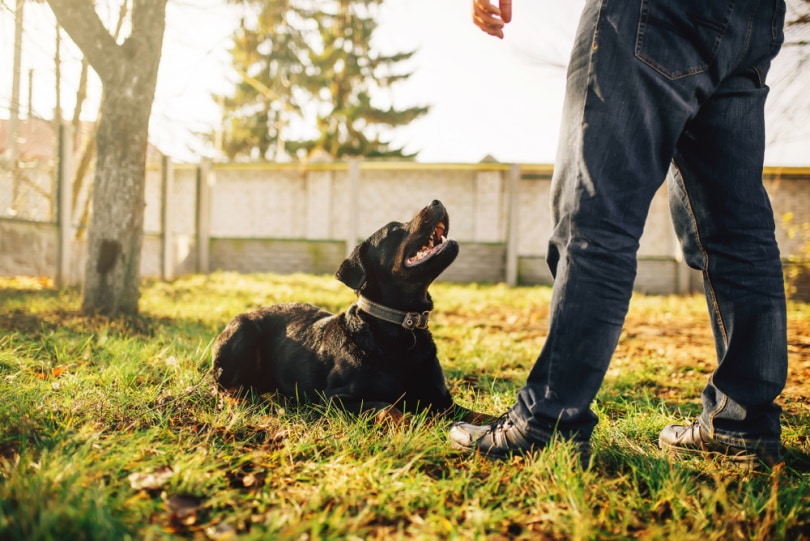How to Train a German Shepherd to be a Guard Dog – 5 Tips and Tricks
Updated on
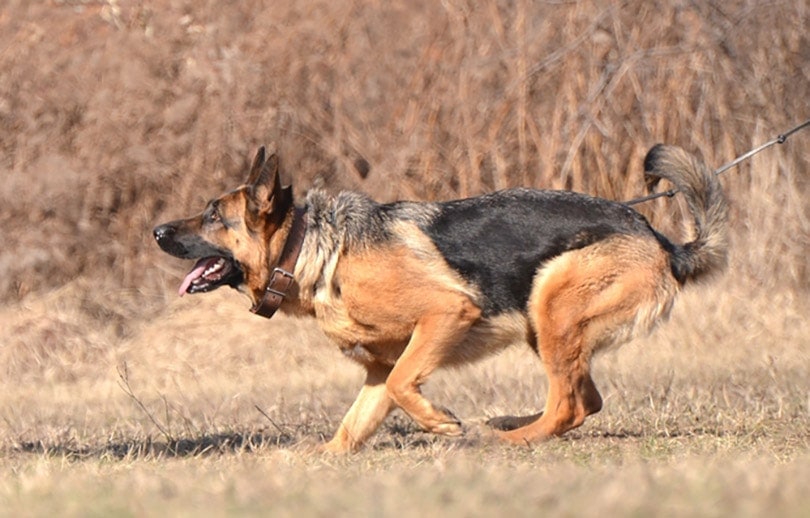
German Shepherds were originally bred to guard sheep. However, their innate guarding instincts make them a great breed at guarding just about anything. Still, these dogs require the proper training to be good guard dogs. In fact, certified guard dogs need specialized training as they are considered working dogs. What many owners refer to as guard dogs are actually protection dogs. Poorly managed and trained German Shepherds may be aggressive when they don’t need to be, which is a common problem.
Luckily, training your dog to protect your house isn’t difficult. A lot of preparation needs to be done when the dog is a puppy, though. Therefore, it is best to get a new puppy for this purpose—don’t try and train an older dog (though this is possible to some extent).
Here’s a rundown of all the steps you’ll need to take to train your German Shepherd, starting when they are a puppy.
The 5 Tips and Tricks to Train a German Shepherd to be a Guard Dog
1. Provide Lots of Socialization
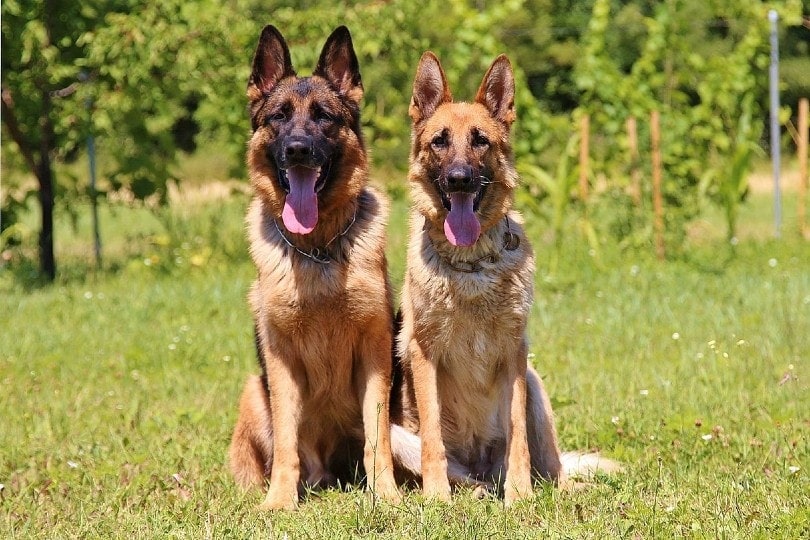
When your dog is younger, it is vital that you provide a lot of socialization. German Shepherds have innate protective instincts. Therefore, your goal isn’t really to encourage these instincts, but to channel them where they need to go. Without socialization, your dog may become protective of just about everything, including strange dogs and visitors.
You want your dog to protect you against actual threats—not your house guests. Therefore, socialization is vital, especially when the dog is young.
Group obedience classes are a great way to get this socialization. They provide a safe place for your dog to interact with strangers and other dogs. However, you also want to ensure that your dog is exposed to other sights and sounds. For instance, playgrounds, loud appliances, and umbrellas all need to be introduced when the dog is young.
2. Find a Basic Obedience Class
Before your German Shepherd can become a guard dog, you’ll need to teach them basic obedience. Puppy classes are a great place to start, as we have previously stated. However, you may also want to look into private classes if your dog needs help in particular areas.
Be sure the classes you pick center around positive reinforcement training. Needing to have “dominance” over your dog isn’t necessary, it is better to build a relationship based on trust. In fact, harsher training techniques can make your dog more reactive, which is the opposite of what you want.
Always be sure to ask the trainers what their methods are. There are many old-fashioned techniques that we now know are harmful to dogs, but these remain popular in some trainer circles. Clicker training, reward-based training, and positive reinforcement training are examples of science-backed techniques that work for German Shepherds.
Stay away from alpha-rolls and scruffing. On top of being ineffective, these techniques can be dangerous.
3. Train an “Attack” Command
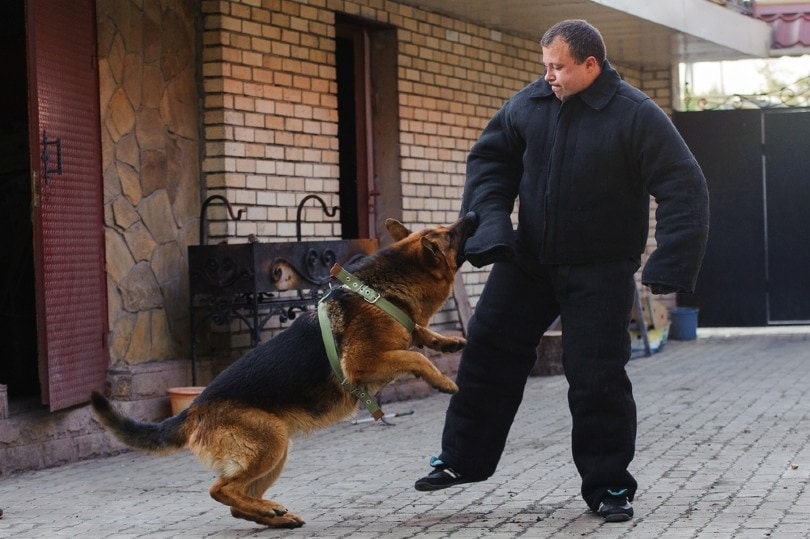
While you can train this command yourself, we recommend working with a professional who specializes in protection dogs. Training accidents can occur and German Shepherds can cause serious injuries. Therefore, a professional can help minimize these risks and make the most out of your training.
Typically, trainers recommend using the word “attack” in another language, as you are less likely to accidentally use it. Russian, German, and Japanese are common. However, it doesn’t really matter what language you use. Dogs do not respond to one language better than another.
You’ll need protective gear for this command to prevent your German Shepherd from actually biting you or an assistant. Firstly, you’ll want to encourage your dog to bite the mitt or padded sleeve as if you were playing. When they do so, reward them and say your chosen command word.
4. Train a Release Command
After your dog successfully attacks when asked, it is time to teach them to let go. Often, it is best to catch your dog doing this and teach the command that way. Therefore, when you’re using the attack command, simply follow up with the release command after your dog lets go and offer a reward. After a few tries, you can begin asking your dog to release.
As you’d imagine, this command is just as important as the attack command. Without it, you can’t have full control of your dog.
5. Practice, Practice, Practice
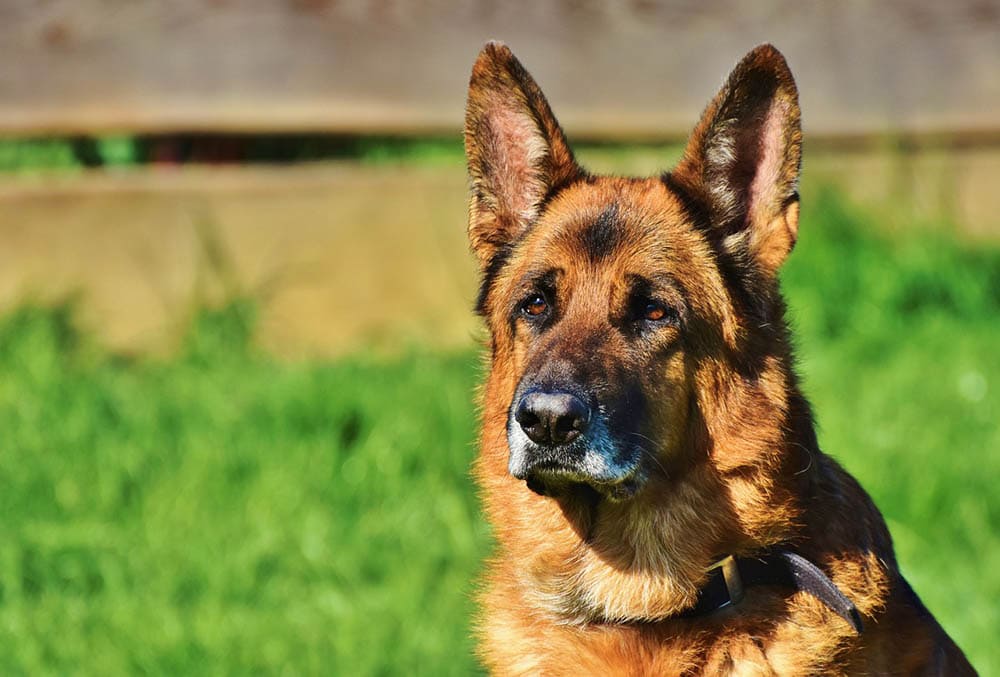
Next, you’ll need to have an assistant in full protective gear. Have them enter your home or in a neutral place and act aggressively. Issue the attack command and allow your dog to pursue the assistant until the threat is “neutralized”. Next, issue the release command and tell your dog to come back to you. Teaching a recall command is very helpful in this circumstance.
Therefore, if your dog hasn’t mastered this more advanced command, you may want to focus on it now. It makes getting your dog back after issuing the attack command much easier.
Do this a few times in many situations. You’ll want to practice multiple times to ensure that your dog understands the commands in many situations. However, you should also practice regularly even after they have mastered the command to ensure that they stay on their game.
In all likelihood, this isn’t a command you’ll be able to weave into your everyday life. Therefore, you’ll have to set up situations to practice it to ensure that your dog doesn’t forget the commands.
What’s the Difference Between a Guard Dog and an Alert Dog?
The main difference between a guard dog and an alert dog is that alert dogs don’t actually do any attacking, while guard dogs do. An alert dog’s sole purpose is to bark and let you know that someone is around. However, they don’t actually do anything about that someone. On the other hand, a guard dog is trained to attack and defend their home or a person. Those two jobs are very different.
A German Shepherd was bred to be a guard dog. Originally, they were bred to protect sheep and other animals from thieves and predators. They actually attacked those that came near their charges.
On the other hand, many small dogs were bred to be alert dogs. Smaller dogs work best in this situation, as they can remain unseen while also being very noisy. In some parts of the world, smaller alert dogs were bred next to larger guard dogs and often used as a team. The alert dog would call the guard dog to the area, where the guard dog could defend against the intruder.
Conclusion
German Shepherds make great guard dogs—if they are trained correctly. While this breed has innate instincts, that doesn’t mean that they don’t require training. Socialization is also needed. Otherwise, your dog may try to protect you against just about everything. Unsocialized German Shepherds can be downright dangerous.
We do recommend working with a professional, as training a guard dog yourself is difficult at home. The use of safety equipment is a must.
Featured Image Credit: muroPhotographer, Shutterstock




